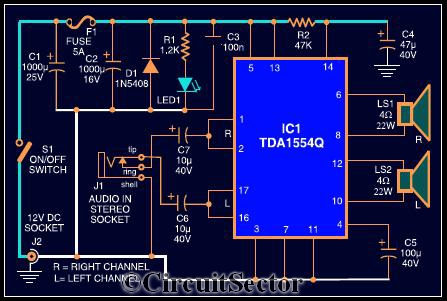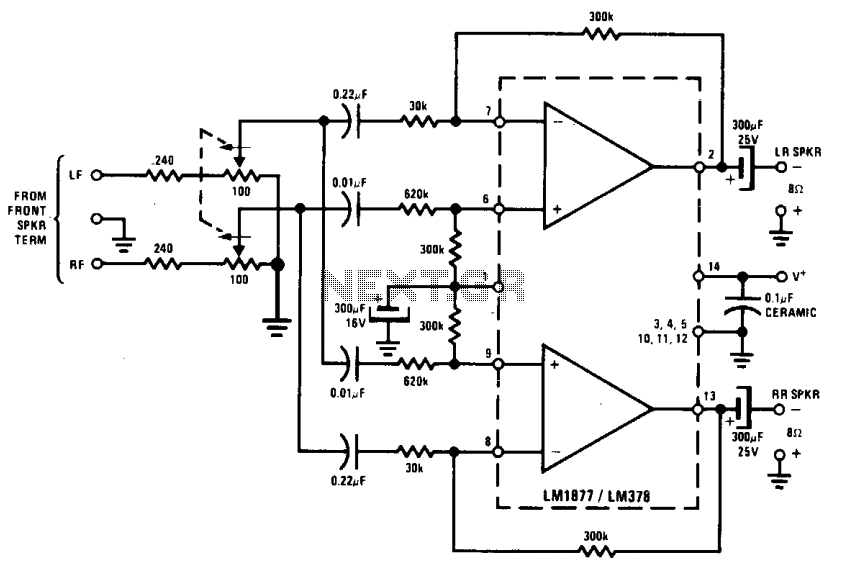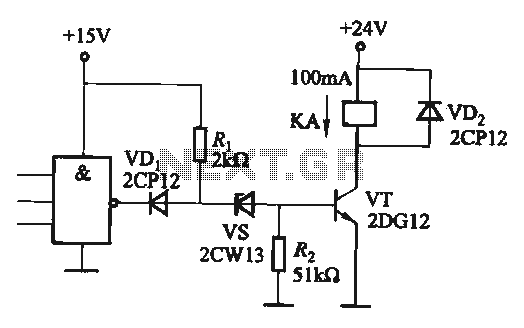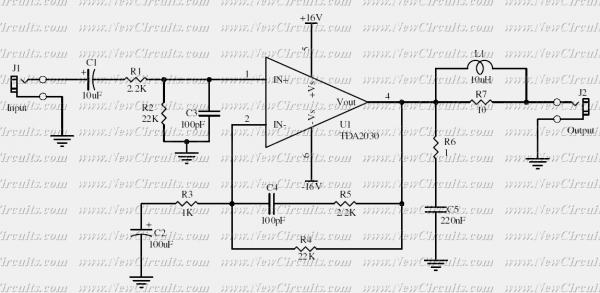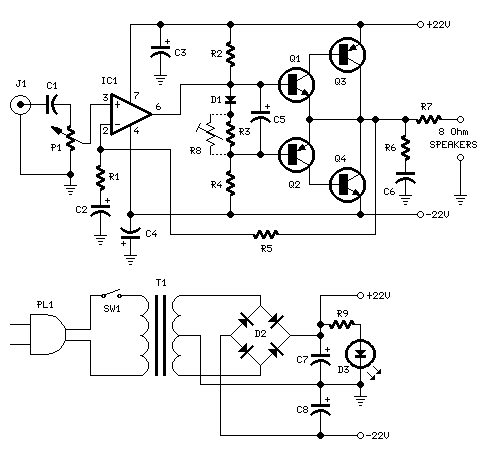
DAC and Headphone Amplifier
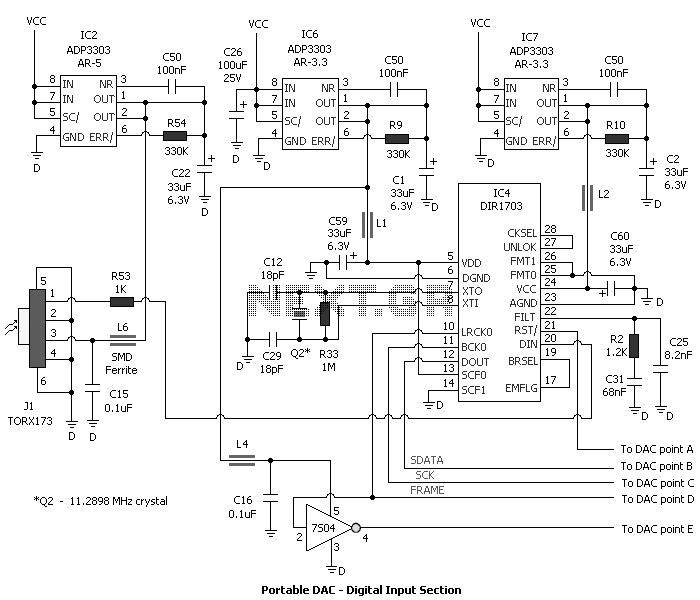
The idea behind the portable DAC is to get better sound than from the line out or headphone out of portable CD player, a pc sound card or other digital audio source. Many of us want to listen to music on the go or on PCs, and would like to get better quality than most of audio rigs today can provide. The quality of the headphones is the main contributor to the overall sound quality from a rig. Quite a few higher-end headphones require more powerful amplifiers than what’s supplied with the average portable device. When it comes to audio sources (i.e., PCDP or other), these devices are mass-market, optimized for a set of parameters that doesn't include audio quality. I set my goal high and wanted to get superior sound quality from both portable and non-portable equipment. This PDAC is my fourth design. It has fewer parts (and fewer SMD parts), is smaller, and is easier to build than the other three prototypes. For a change, this one is both a DAC and a headphone amplifier. It has a 3.5mm input jack with breakout, so that the PDAC can be used as a regular headphone amplifier. The portable DAC is battery-powered, but can run off a good quality wall-wart or better, a separate regulated power supply. The PDAC's compatibility with digital sources is excellent. It works with any optical out I've tried: DVD player (at 24-bit/96kHz, although internally the PDAC is 16-bit/96kHz), portable CD player, Sony CDP-CX300 CD MegaChanger, and the SoundBlaster Audigy Platinum sound card. Beginning with the second prototype, I used the Burr-Brown DIR1703 receiver and Analog Devices AD1866 16-bit R2R DAC. The DIR1703 has very low jitter (75ps) and will handle up to 24 bit and 96kHz but output 16/44 to the AD1866. It needs only 30mA at 3.3V. Setting up the chip is somewhat cumbersome and involved. The biggest issue is its inability to handle S/PDIF directly from the line without any conditioning, and worse yet, an inability to handle both coax and optical in without a switch. Crystal chips allow that, although of course optical and coax cannot be active at the same time. The AD1866 DAC called for different analog stage as it has single-ended output with 2.5V as common voltage. I used for two AD823 opamps and one CLC5602 buffer to make a combined fourth-order Bessel filter and buffered amplifier for the DAC's output. The buffered amplifier was based on the multi-loop circuit of the Toni Kemhagen's Lindesberg headphone amplifier.
The second PDAC prototype had deep, deep bass and shrill-free highs, natural-sounding strings and wide, distortion-free dynamic range. In listening sessions with friends we eventually found out some weaknesses. The sound was not as transparent as it is on my bigger DACs or as it is on friend’s high end Marantz SR-19EX receiver. Cymbal clashes didn't reverberate as long, ambience was not quite there and a friend commented that it was harder to distinguish voices of two singers on one of my test tracks (from Verdi's Don Carlo). Also, this prototype did not have volume control, so it cannot be used for driving headphones directly. This limits the usability as a portable device by a large factor.
The third prototype made the analog stage DC coupled by adding virtual ground driver, courtesy of a BUF634 buffer. It added a volume control, although this was not the ideal solution and was somewhat experimental, and a fully functional coaxial input. It could power headphones although the volume wasn't close to deafening due to the limited voltage swing.
For the fourth (and final prototype), I wanted sound that would equal or beat all audio sources I have at home, such as my upgraded CD player, which presented a challenge that I got close to in the third prototype. The sound of my friend's high-end receiver (Marantz SR-19EX) was better, even to untrained ears, although it took some listening time to determine that. The other thing prompting this revision was Chu Moy, the owner and moderator of HeadWize, who asked me to simplify the DAC so that it was easier to build. The DIR1703 requires the external crystal or oscillator, but this shouldn’t be counted against it as that’s probably why it can claim much lower jitter since it doesn’t extract master clock and recycle it but uses two separate PLLs. It also does sample rate conversion, which is quite neat, even though not necessary. The receiver is reset at system turn-on by the Analog Devices ADM707 signal generator. The DIR1703 is available from Digikey, and it's cheap. The biggest negative has got to be its size SSOP, potentially tough to solder. If soldering is successful, however, the gain is small footprint of the chip, and the space is at premium in this project.
The portable Digital-to-Analog Converter (DAC) described is designed to significantly enhance sound quality when compared to the standard outputs of portable CD players, PC sound cards, or other digital audio sources. This device aims to cater to users who prioritize audio fidelity while on the move or using personal computers. The design focuses on achieving superior sound quality, particularly for high-end headphones that often require more robust amplification than standard portable devices can provide.
The fourth iteration of the portable DAC (PDAC) integrates both a DAC and a headphone amplifier within a compact form factor. It features a 3.5mm input jack that allows it to function as a conventional headphone amplifier. The device is powered by batteries but can also operate using a high-quality wall adapter or a dedicated regulated power supply, enhancing its versatility.
The DAC employs the Burr-Brown DIR1703 receiver, known for its low jitter performance (75ps), supporting up to 24-bit/96kHz audio while outputting 16-bit/44.1kHz signals to the Analog Devices AD1866 16-bit R2R DAC. The design requires careful setup, particularly in managing S/PDIF inputs, which necessitate additional conditioning to function correctly. The AD1866 DAC features a single-ended output at a common voltage of 2.5V, necessitating a specific analog stage design. This stage includes two AD823 operational amplifiers and a CLC5602 buffer, creating a fourth-order Bessel filter and a buffered amplifier to ensure high-quality output.
The previous prototypes revealed certain sound quality limitations, such as transparency issues and a lack of volume control, which hindered its effectiveness as a portable device. The third prototype addressed these by implementing a DC-coupled analog stage and adding a volume control, although it still faced challenges in driving headphones to high volumes due to limited voltage swing.
The final prototype's design was refined to meet the performance standards of high-end audio sources, with an emphasis on simplifying the assembly process. The use of an external crystal or oscillator for the DIR1703 contributes to its low jitter capabilities, while the ADM707 signal generator manages the reset function at system startup. The compact size of the DIR1703, although challenging to solder due to its SSOP package, offers significant advantages in terms of space efficiency within the overall DAC design. This combination of features aims to deliver a portable DAC that meets the demands of discerning audio enthusiasts.The idea behind the portable DAC is to get better sound than from the line out or headphone out of portable CD player, a pc sound card or other digital audio source. Many of us want to listen to music on the go or on PCs, and would like to get better quality than most of audio rigs today can provide.
The quality of the headphones is the main contributor to the overall sound quality from a rig. Quite a few higher-end headphones require more powerful amplifiers than what’s supplied with the average portable device. When it comes to audio sources (i.e., PCDP or other), these devices are mass-market, optimized for a set of parameters that doesn't include audio quality.
I set my goal high and wanted to get superior sound quality from both portable and non-portable equipment. This PDAC is my fourth design. It has fewer parts (and fewer SMD parts), is smaller, and is easier to build than the other three prototypes.
For a change, this one is both a DAC and a headphone amplifier. It has a 3.5mm input jack with breakout, so that the PDAC can be used as a regular headphone amplifier. The portable DAC is battery-powered, but can run off a good quality wall-wart or better, a separate regulated power supply.
The PDAC's compatibility with digital sources is excellent. It works with any optical out I've tried: DVD player (at 24-bit/96kHz, although internally the PDAC is 16-bit/96kHz), portable CD player, Sony CDP-CX300 CD MegaChanger, and the SoundBlaster Audigy Platinum sound card. Beginning with the second prototype, I used the Burr-Brown DIR1703 receiver and Analog Devices AD1866 16-bit R2R DAC.
The DIR1703 has very low jitter (75ps) and will handle up to 24 bit and 96kHz but output 16/44 to the AD1866. It needs only 30mA at 3.3V. Setting up the chip is somewhat cumbersome and involved. The biggest issue is its inability to handle S/PDIF directly from the line without any conditioning, and worse yet, an inability to handle both coax and optical in without a switch.
Crystal chips allow that, although of course optical and coax cannot be active at the same time. The AD1866 DAC called for different analog stage as it has single-ended output with 2.5V as common voltage. I used for two AD823 opamps and one CLC5602 buffer to make a combined fourth-order Bessel filter and buffered amplifier for the DAC's output.
The buffered amplifier was based on the multi-loop circuit of the Toni Kemhagen's Lindesberg headphone amplifier. The second PDAC prototype had deep, deep bass and shrill-free highs, natural-sounding strings and wide, distortion-free dynamic range.
In listening sessions with friends we eventually found out some weaknesses. The sound was not as transparent as it is on my bigger DACs or as it is on friend’s high end Marantz SR-19EX receiver. Cymbal clashes didn't reverberate as long, ambience was not quite there and a friend commented that it was harder to distinguish voices of two singers on one of my test tracks (from Verdi's Don Carlo).
Also, this prototype did not have volume control, so it cannot be used for driving headphones directly. This limits the usability as a portable device by a large factor. The third prototype made the analog stage DC coupled by adding virtual ground driver, courtesy of a BUF634 buffer.
It added a volume control, although this was not the ideal solution and was somewhat experimental, and a fully functional coaxial input. It could power headphones although the volume wasn't close to deafening due to the limited voltage swing.
For the fourth (and final prototype), I wanted sound that would equal or beat all audio sources I have at home, such as my upgraded CD player, which presented a challenge that I got close to in the third prototype. The sound of my friend's high-end receiver (Marantz SR-19EX) was better, even to untrained ears, although it took some listening time to determine that.
The other thing prompting this revision was Chu Moy, the owner and moderator of HeadWize, who asked me to simplify the DAC so that it was easier to build. The DIR1703 requires the external crystal or oscillator, but this shouldn’t be counted against it as that’s probably why it can claim much lower jitter since it doesn’t extract master clock and recycle it but uses two separate PLLs.
It also does sample rate conversion, which is quite neat, even though not necessary. The receiver is reset at system turn-on by the Analog Devices ADM707 signal generator. The DIR1703 is available from Digikey, and it's cheap. The biggest negative has got to be its size SSOP, potentially tough to solder. If soldering is successful, however, the gain is small footprint of the chip, and the space is at premium in this project. 🔗 External reference
The second PDAC prototype had deep, deep bass and shrill-free highs, natural-sounding strings and wide, distortion-free dynamic range. In listening sessions with friends we eventually found out some weaknesses. The sound was not as transparent as it is on my bigger DACs or as it is on friend’s high end Marantz SR-19EX receiver. Cymbal clashes didn't reverberate as long, ambience was not quite there and a friend commented that it was harder to distinguish voices of two singers on one of my test tracks (from Verdi's Don Carlo). Also, this prototype did not have volume control, so it cannot be used for driving headphones directly. This limits the usability as a portable device by a large factor.
The third prototype made the analog stage DC coupled by adding virtual ground driver, courtesy of a BUF634 buffer. It added a volume control, although this was not the ideal solution and was somewhat experimental, and a fully functional coaxial input. It could power headphones although the volume wasn't close to deafening due to the limited voltage swing.
For the fourth (and final prototype), I wanted sound that would equal or beat all audio sources I have at home, such as my upgraded CD player, which presented a challenge that I got close to in the third prototype. The sound of my friend's high-end receiver (Marantz SR-19EX) was better, even to untrained ears, although it took some listening time to determine that. The other thing prompting this revision was Chu Moy, the owner and moderator of HeadWize, who asked me to simplify the DAC so that it was easier to build. The DIR1703 requires the external crystal or oscillator, but this shouldn’t be counted against it as that’s probably why it can claim much lower jitter since it doesn’t extract master clock and recycle it but uses two separate PLLs. It also does sample rate conversion, which is quite neat, even though not necessary. The receiver is reset at system turn-on by the Analog Devices ADM707 signal generator. The DIR1703 is available from Digikey, and it's cheap. The biggest negative has got to be its size SSOP, potentially tough to solder. If soldering is successful, however, the gain is small footprint of the chip, and the space is at premium in this project.
The portable Digital-to-Analog Converter (DAC) described is designed to significantly enhance sound quality when compared to the standard outputs of portable CD players, PC sound cards, or other digital audio sources. This device aims to cater to users who prioritize audio fidelity while on the move or using personal computers. The design focuses on achieving superior sound quality, particularly for high-end headphones that often require more robust amplification than standard portable devices can provide.
The fourth iteration of the portable DAC (PDAC) integrates both a DAC and a headphone amplifier within a compact form factor. It features a 3.5mm input jack that allows it to function as a conventional headphone amplifier. The device is powered by batteries but can also operate using a high-quality wall adapter or a dedicated regulated power supply, enhancing its versatility.
The DAC employs the Burr-Brown DIR1703 receiver, known for its low jitter performance (75ps), supporting up to 24-bit/96kHz audio while outputting 16-bit/44.1kHz signals to the Analog Devices AD1866 16-bit R2R DAC. The design requires careful setup, particularly in managing S/PDIF inputs, which necessitate additional conditioning to function correctly. The AD1866 DAC features a single-ended output at a common voltage of 2.5V, necessitating a specific analog stage design. This stage includes two AD823 operational amplifiers and a CLC5602 buffer, creating a fourth-order Bessel filter and a buffered amplifier to ensure high-quality output.
The previous prototypes revealed certain sound quality limitations, such as transparency issues and a lack of volume control, which hindered its effectiveness as a portable device. The third prototype addressed these by implementing a DC-coupled analog stage and adding a volume control, although it still faced challenges in driving headphones to high volumes due to limited voltage swing.
The final prototype's design was refined to meet the performance standards of high-end audio sources, with an emphasis on simplifying the assembly process. The use of an external crystal or oscillator for the DIR1703 contributes to its low jitter capabilities, while the ADM707 signal generator manages the reset function at system startup. The compact size of the DIR1703, although challenging to solder due to its SSOP package, offers significant advantages in terms of space efficiency within the overall DAC design. This combination of features aims to deliver a portable DAC that meets the demands of discerning audio enthusiasts.The idea behind the portable DAC is to get better sound than from the line out or headphone out of portable CD player, a pc sound card or other digital audio source. Many of us want to listen to music on the go or on PCs, and would like to get better quality than most of audio rigs today can provide.
The quality of the headphones is the main contributor to the overall sound quality from a rig. Quite a few higher-end headphones require more powerful amplifiers than what’s supplied with the average portable device. When it comes to audio sources (i.e., PCDP or other), these devices are mass-market, optimized for a set of parameters that doesn't include audio quality.
I set my goal high and wanted to get superior sound quality from both portable and non-portable equipment. This PDAC is my fourth design. It has fewer parts (and fewer SMD parts), is smaller, and is easier to build than the other three prototypes.
For a change, this one is both a DAC and a headphone amplifier. It has a 3.5mm input jack with breakout, so that the PDAC can be used as a regular headphone amplifier. The portable DAC is battery-powered, but can run off a good quality wall-wart or better, a separate regulated power supply.
The PDAC's compatibility with digital sources is excellent. It works with any optical out I've tried: DVD player (at 24-bit/96kHz, although internally the PDAC is 16-bit/96kHz), portable CD player, Sony CDP-CX300 CD MegaChanger, and the SoundBlaster Audigy Platinum sound card. Beginning with the second prototype, I used the Burr-Brown DIR1703 receiver and Analog Devices AD1866 16-bit R2R DAC.
The DIR1703 has very low jitter (75ps) and will handle up to 24 bit and 96kHz but output 16/44 to the AD1866. It needs only 30mA at 3.3V. Setting up the chip is somewhat cumbersome and involved. The biggest issue is its inability to handle S/PDIF directly from the line without any conditioning, and worse yet, an inability to handle both coax and optical in without a switch.
Crystal chips allow that, although of course optical and coax cannot be active at the same time. The AD1866 DAC called for different analog stage as it has single-ended output with 2.5V as common voltage. I used for two AD823 opamps and one CLC5602 buffer to make a combined fourth-order Bessel filter and buffered amplifier for the DAC's output.
The buffered amplifier was based on the multi-loop circuit of the Toni Kemhagen's Lindesberg headphone amplifier. The second PDAC prototype had deep, deep bass and shrill-free highs, natural-sounding strings and wide, distortion-free dynamic range.
In listening sessions with friends we eventually found out some weaknesses. The sound was not as transparent as it is on my bigger DACs or as it is on friend’s high end Marantz SR-19EX receiver. Cymbal clashes didn't reverberate as long, ambience was not quite there and a friend commented that it was harder to distinguish voices of two singers on one of my test tracks (from Verdi's Don Carlo).
Also, this prototype did not have volume control, so it cannot be used for driving headphones directly. This limits the usability as a portable device by a large factor. The third prototype made the analog stage DC coupled by adding virtual ground driver, courtesy of a BUF634 buffer.
It added a volume control, although this was not the ideal solution and was somewhat experimental, and a fully functional coaxial input. It could power headphones although the volume wasn't close to deafening due to the limited voltage swing.
For the fourth (and final prototype), I wanted sound that would equal or beat all audio sources I have at home, such as my upgraded CD player, which presented a challenge that I got close to in the third prototype. The sound of my friend's high-end receiver (Marantz SR-19EX) was better, even to untrained ears, although it took some listening time to determine that.
The other thing prompting this revision was Chu Moy, the owner and moderator of HeadWize, who asked me to simplify the DAC so that it was easier to build. The DIR1703 requires the external crystal or oscillator, but this shouldn’t be counted against it as that’s probably why it can claim much lower jitter since it doesn’t extract master clock and recycle it but uses two separate PLLs.
It also does sample rate conversion, which is quite neat, even though not necessary. The receiver is reset at system turn-on by the Analog Devices ADM707 signal generator. The DIR1703 is available from Digikey, and it's cheap. The biggest negative has got to be its size SSOP, potentially tough to solder. If soldering is successful, however, the gain is small footprint of the chip, and the space is at premium in this project. 🔗 External reference
Warning: include(partials/cookie-banner.php): Failed to open stream: Permission denied in /var/www/html/nextgr/view-circuit.php on line 713
Warning: include(): Failed opening 'partials/cookie-banner.php' for inclusion (include_path='.:/usr/share/php') in /var/www/html/nextgr/view-circuit.php on line 713
